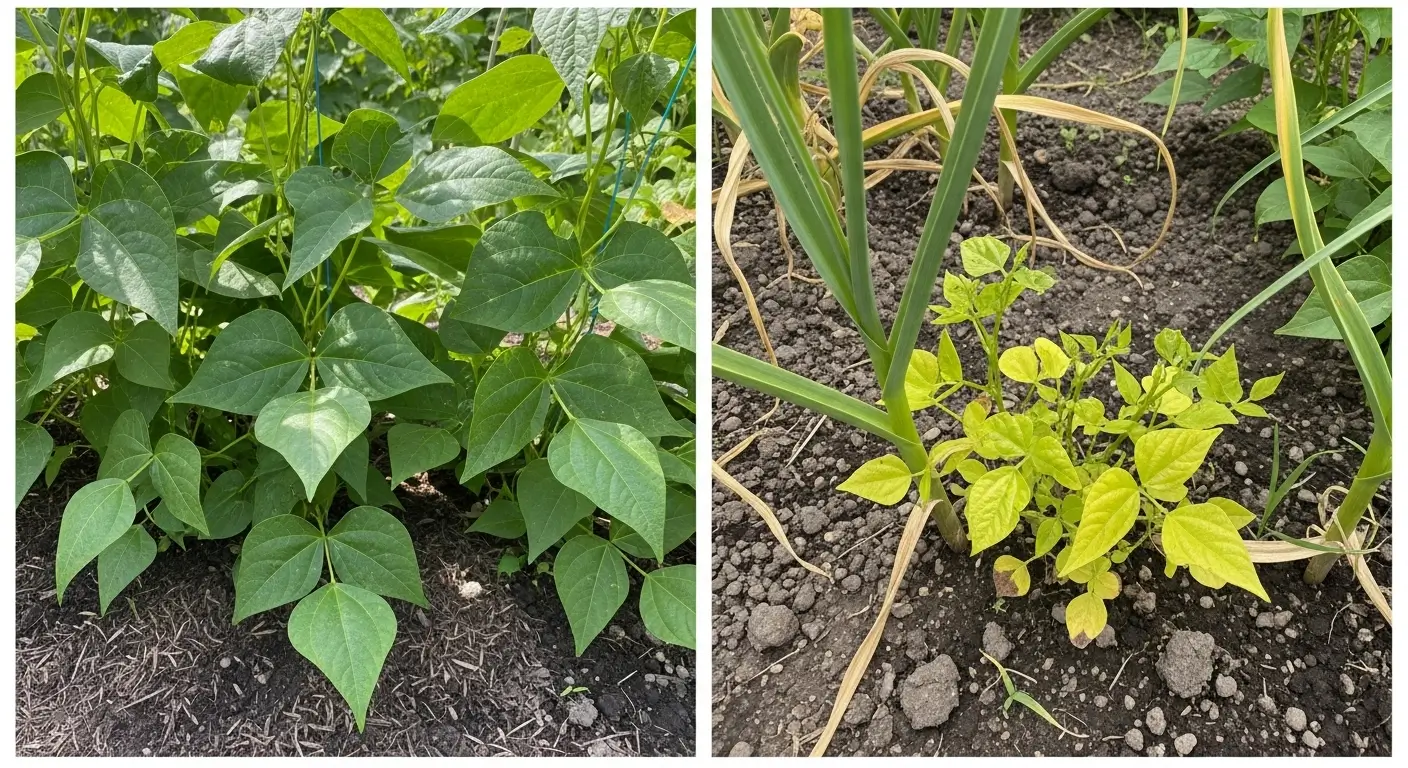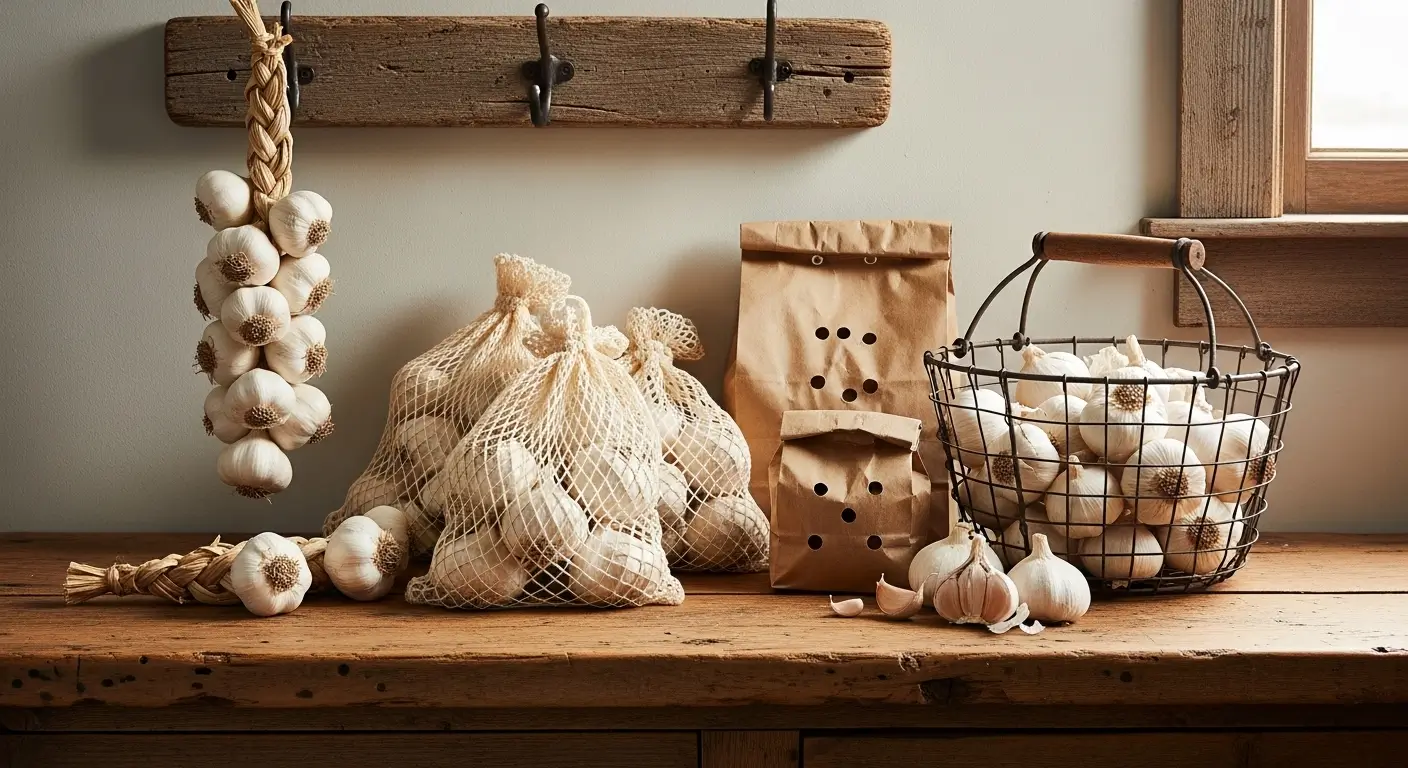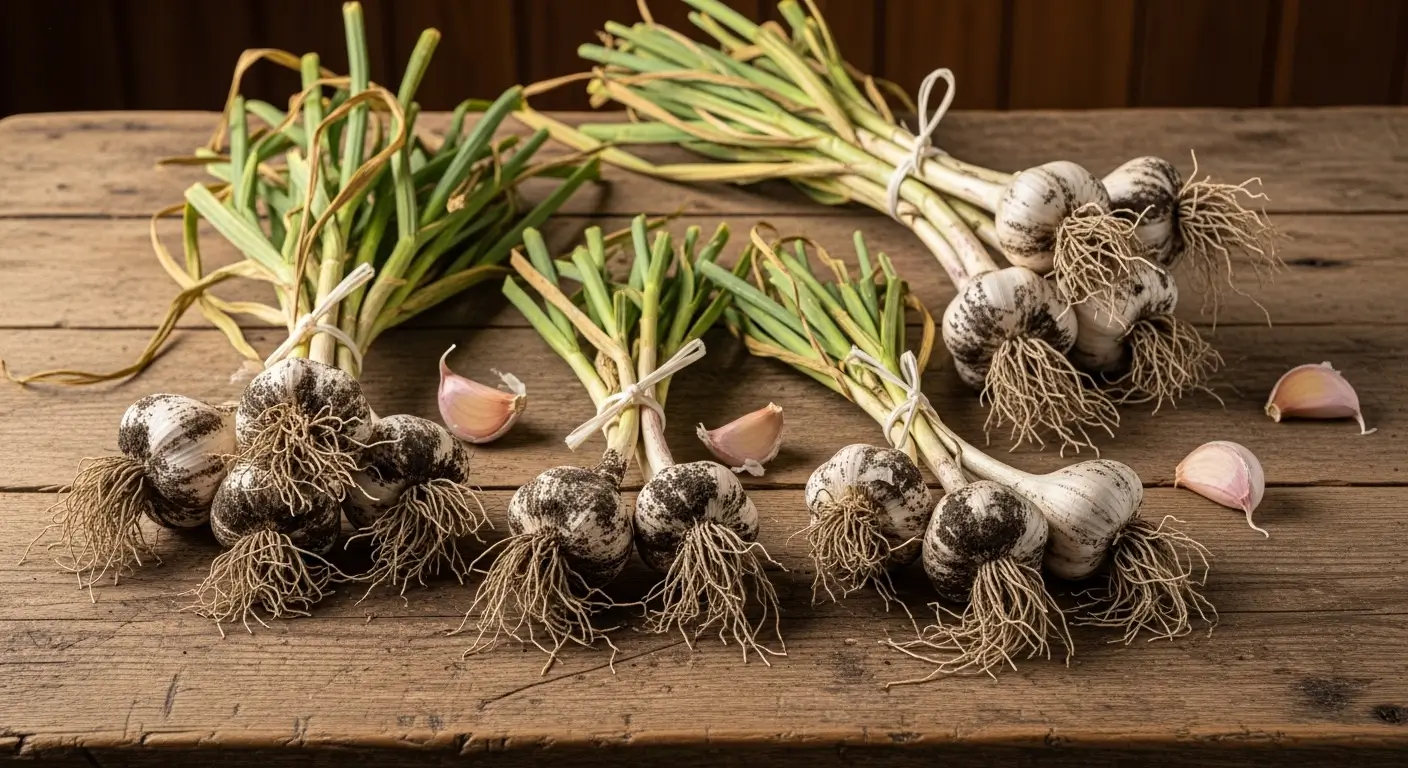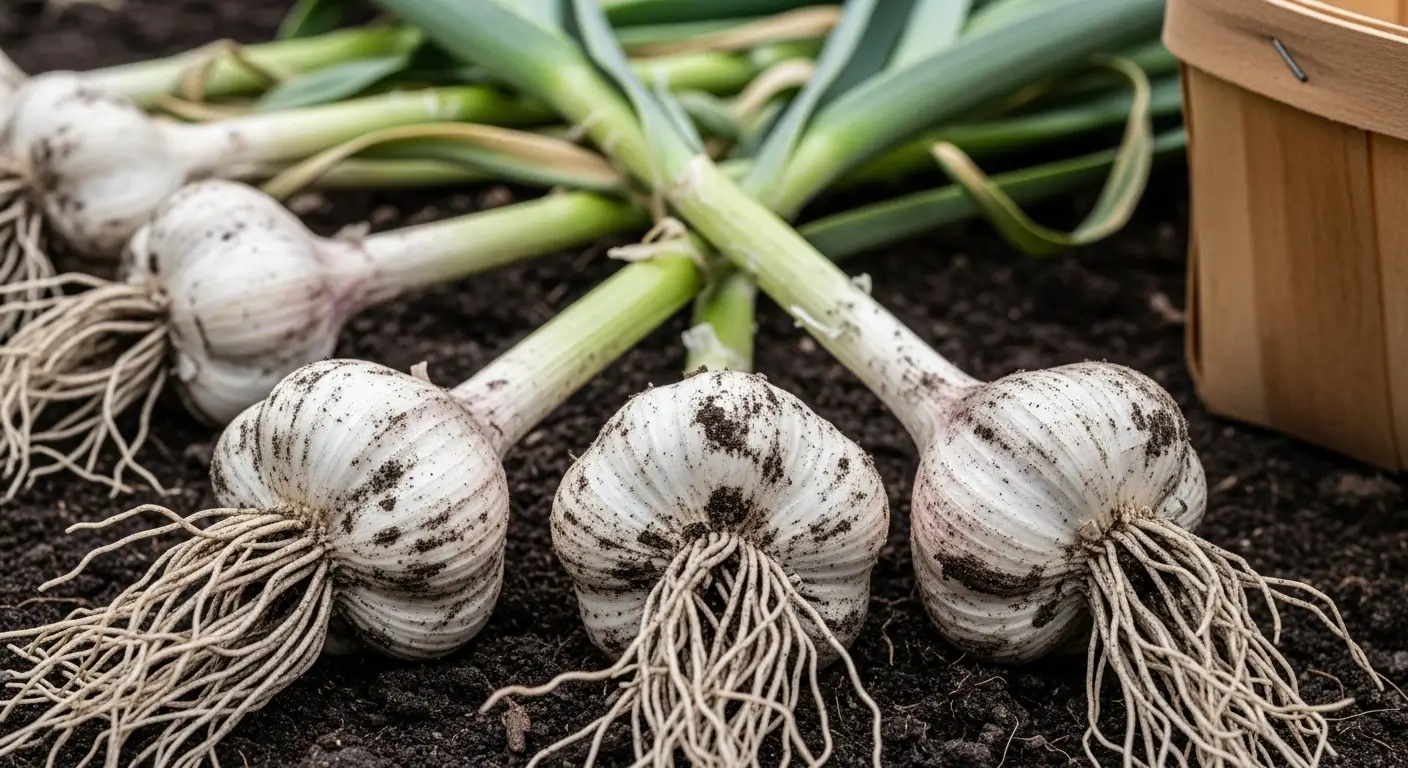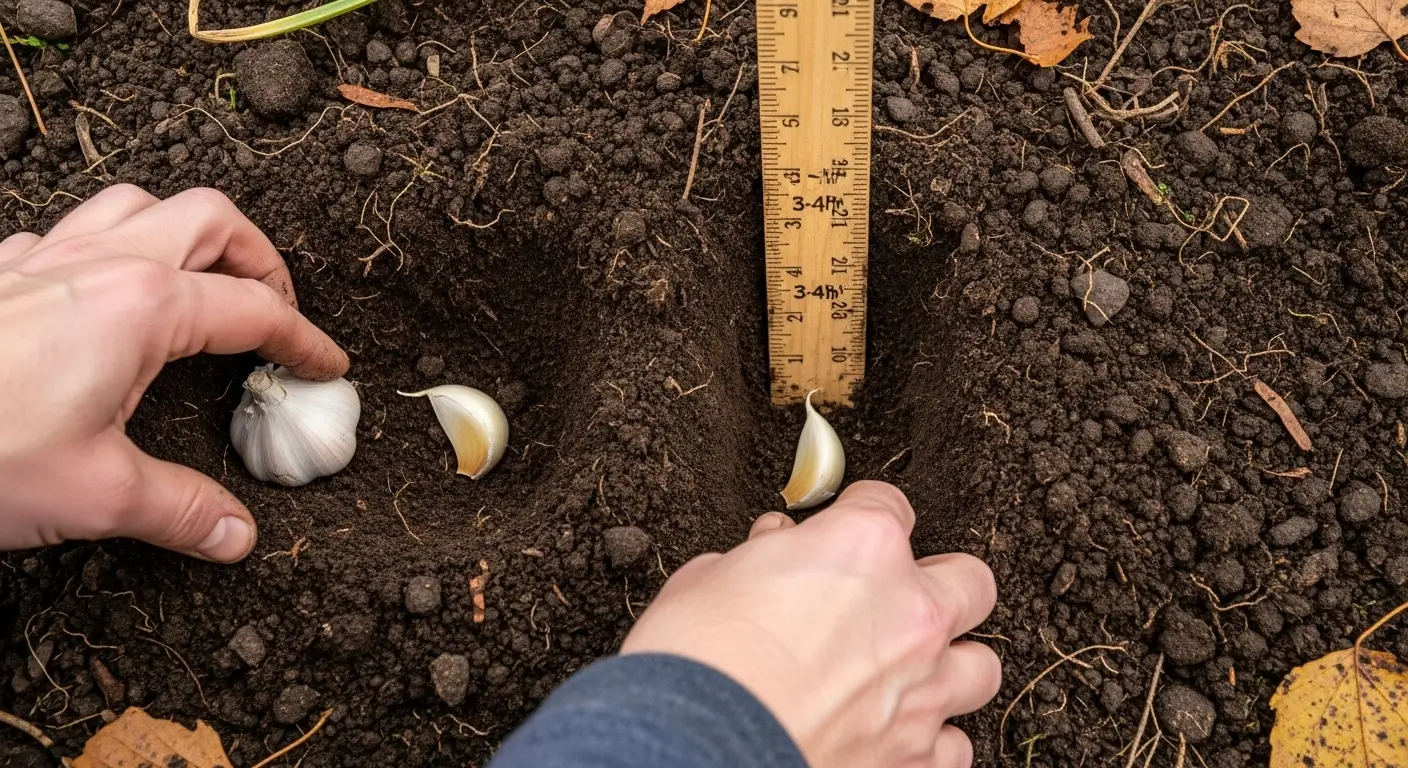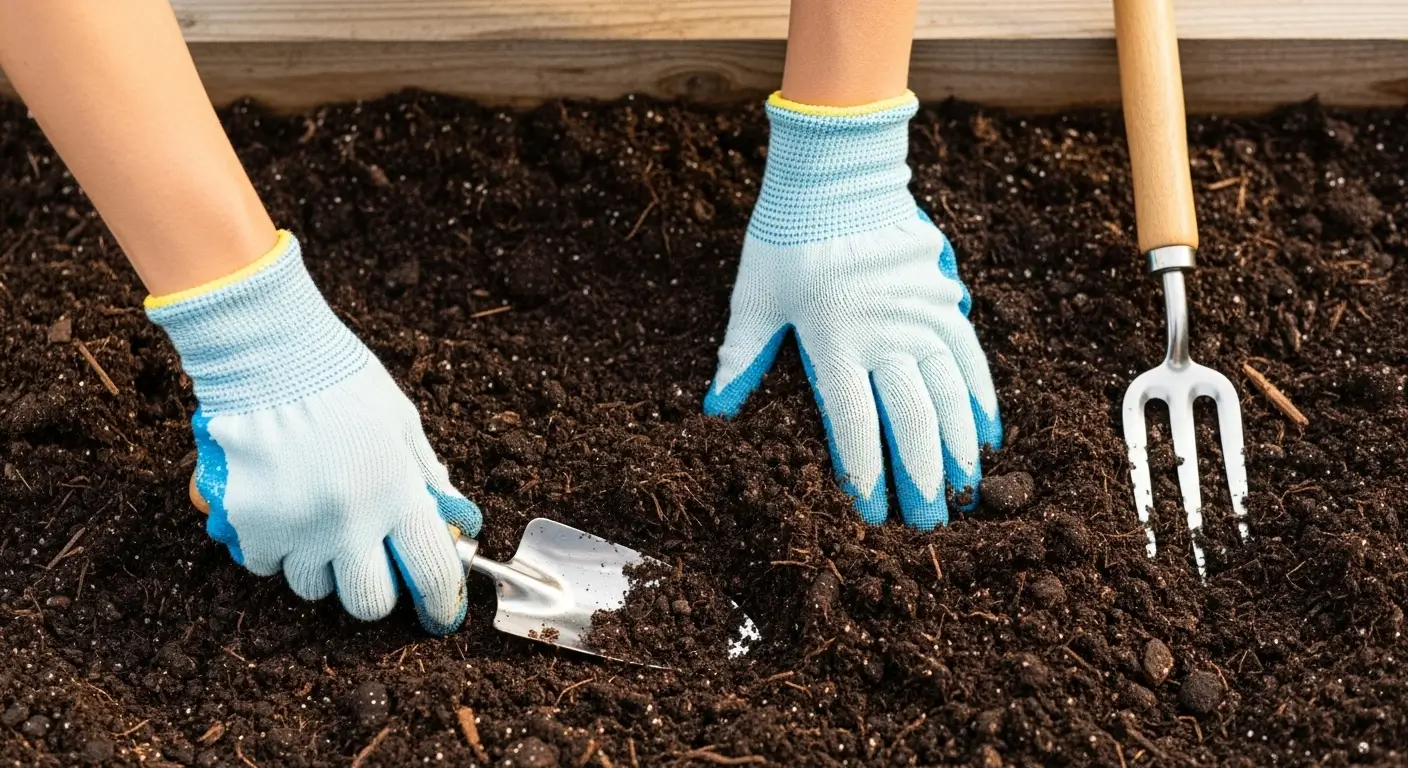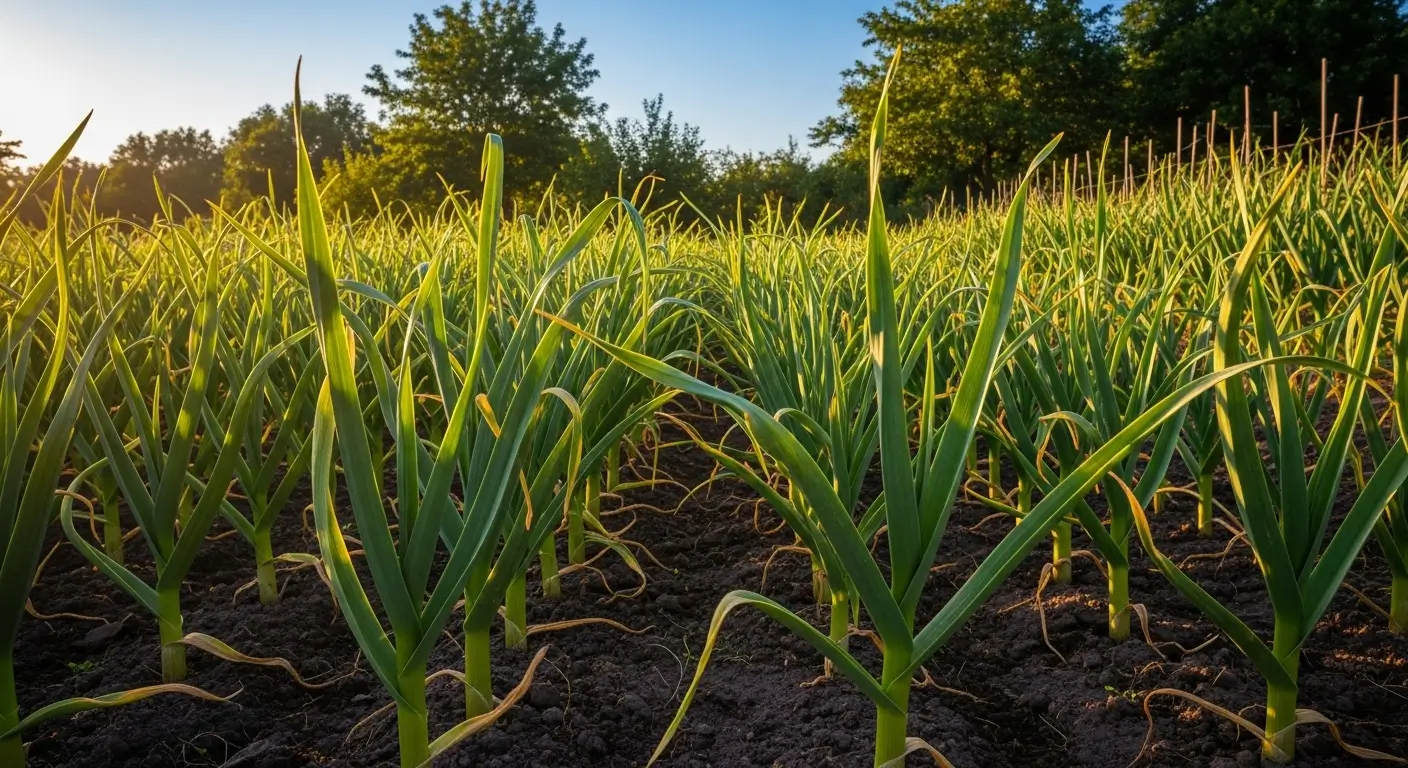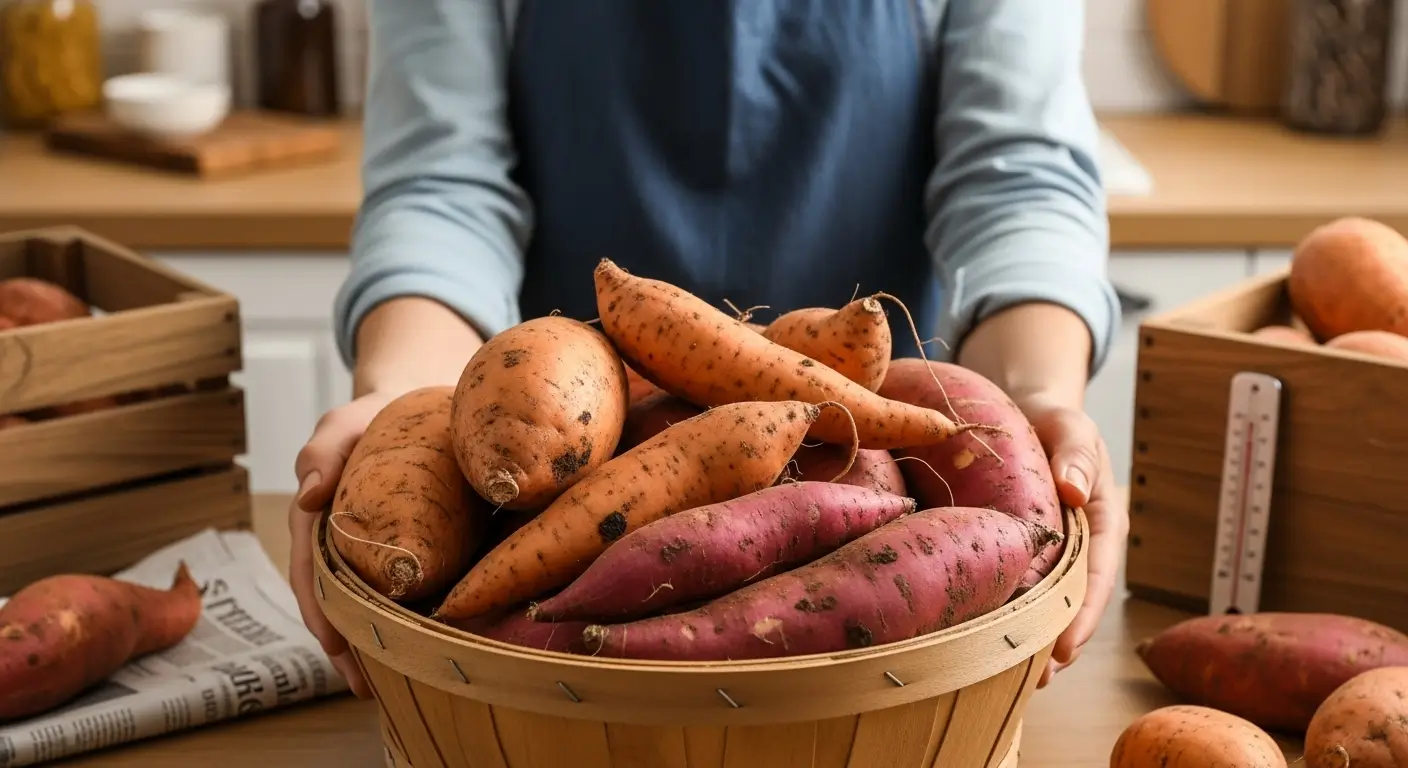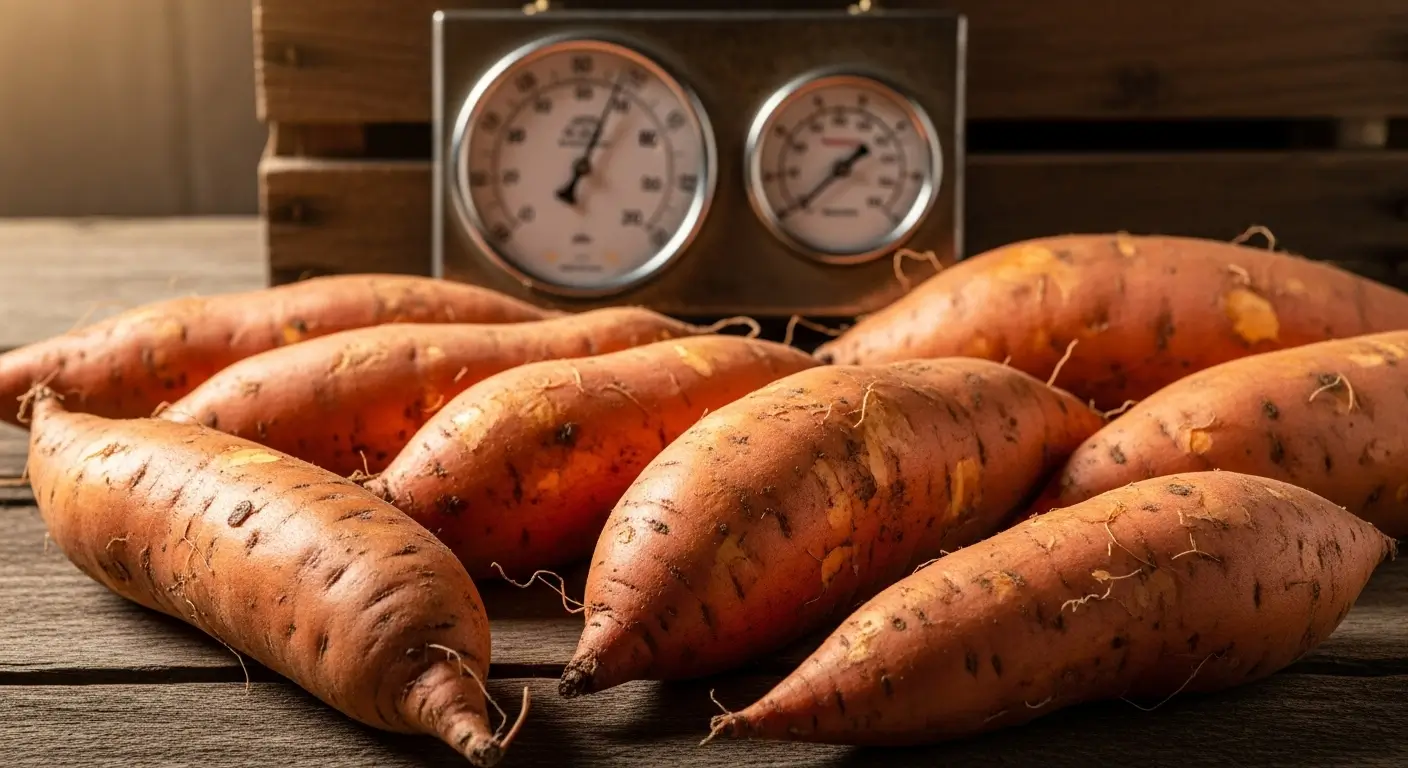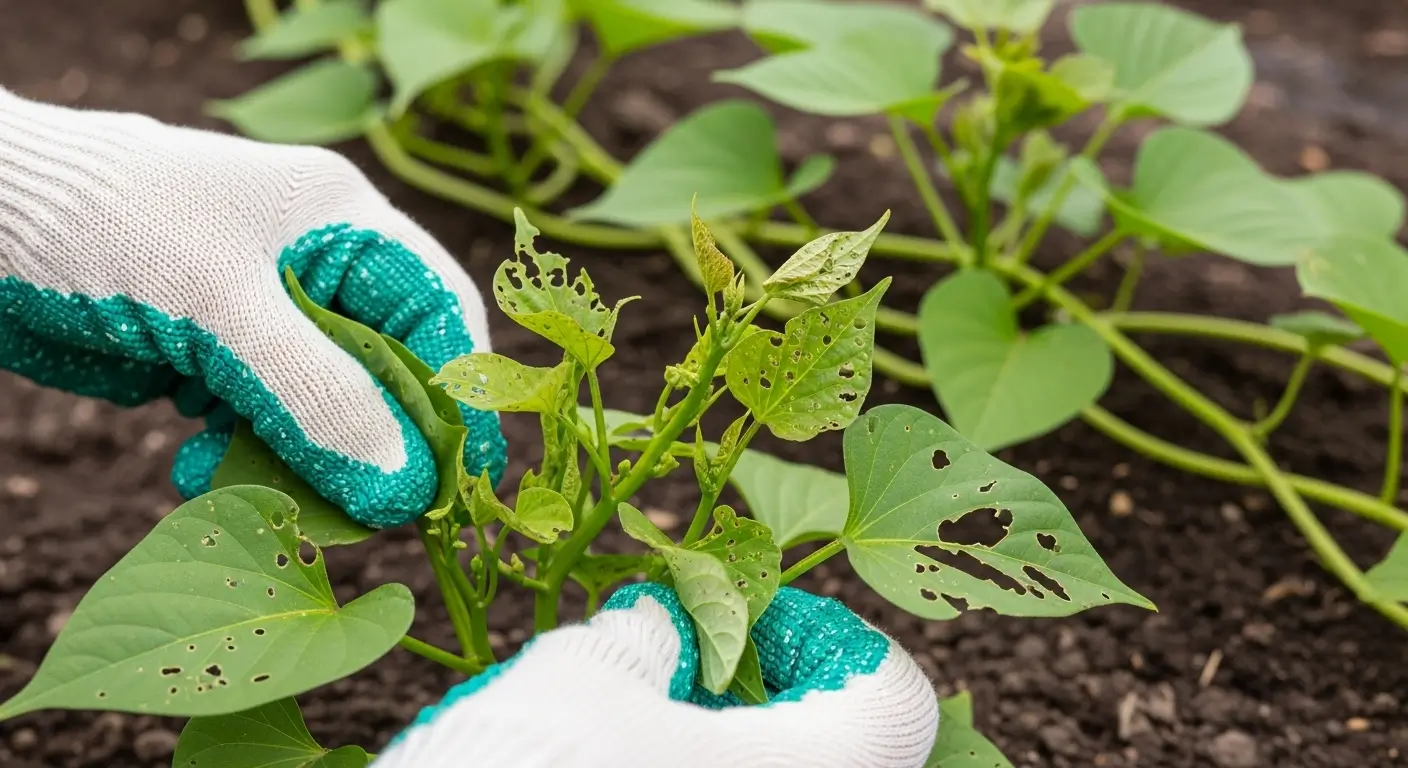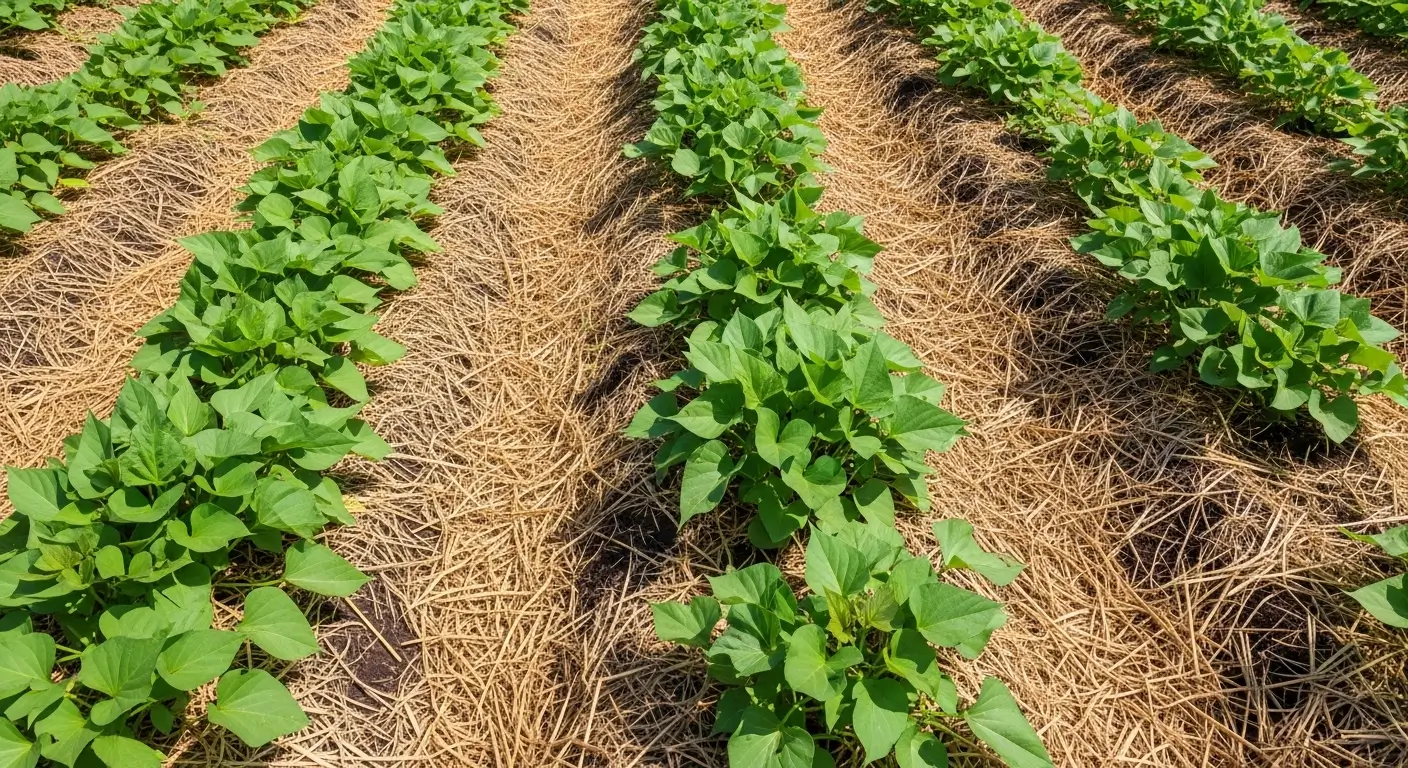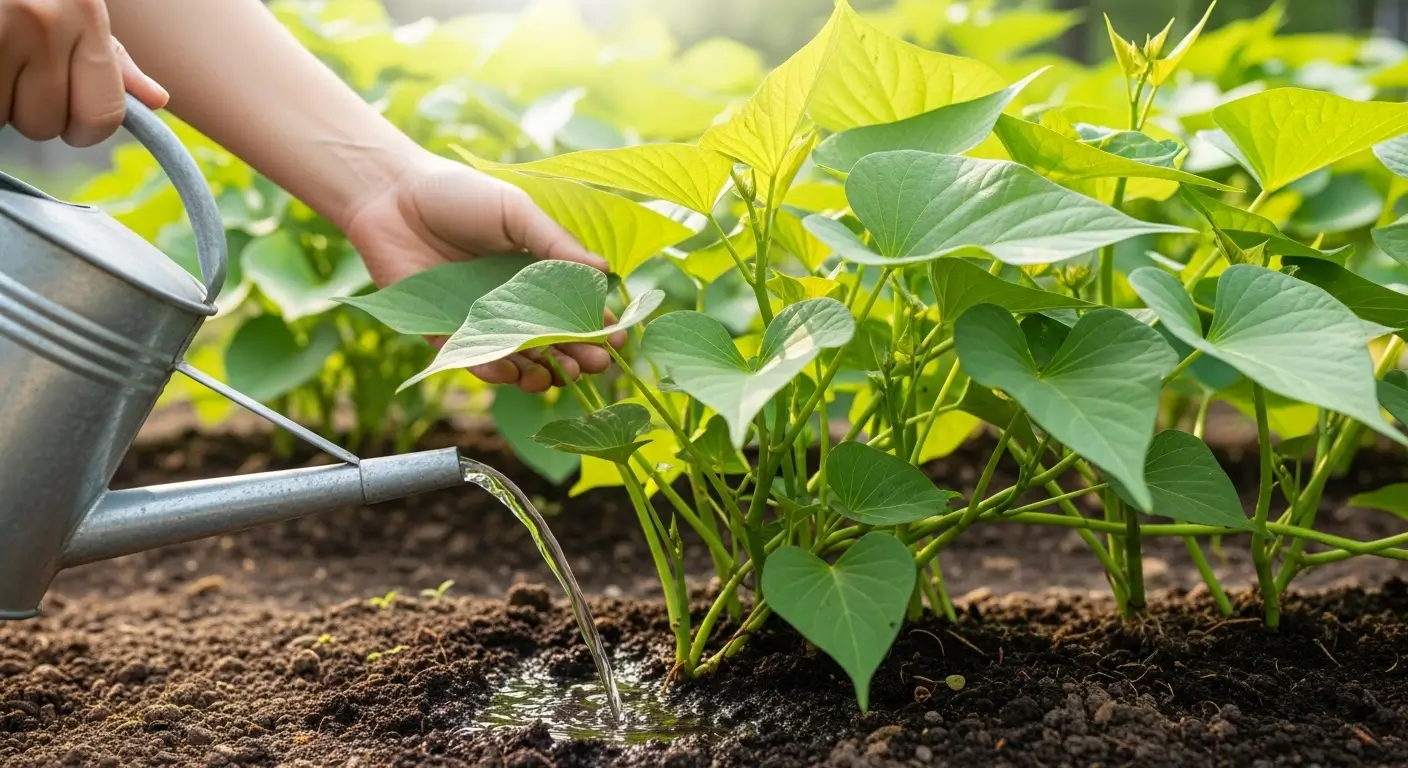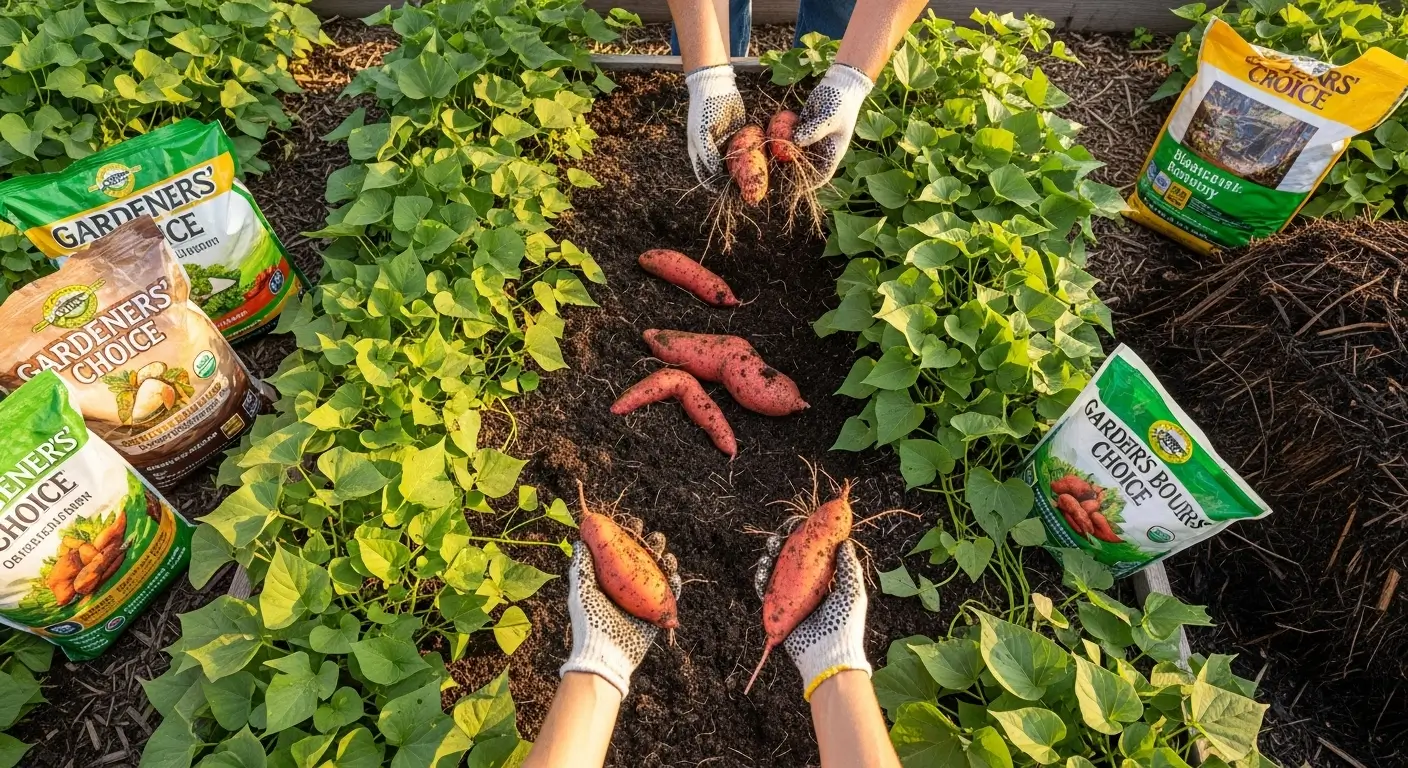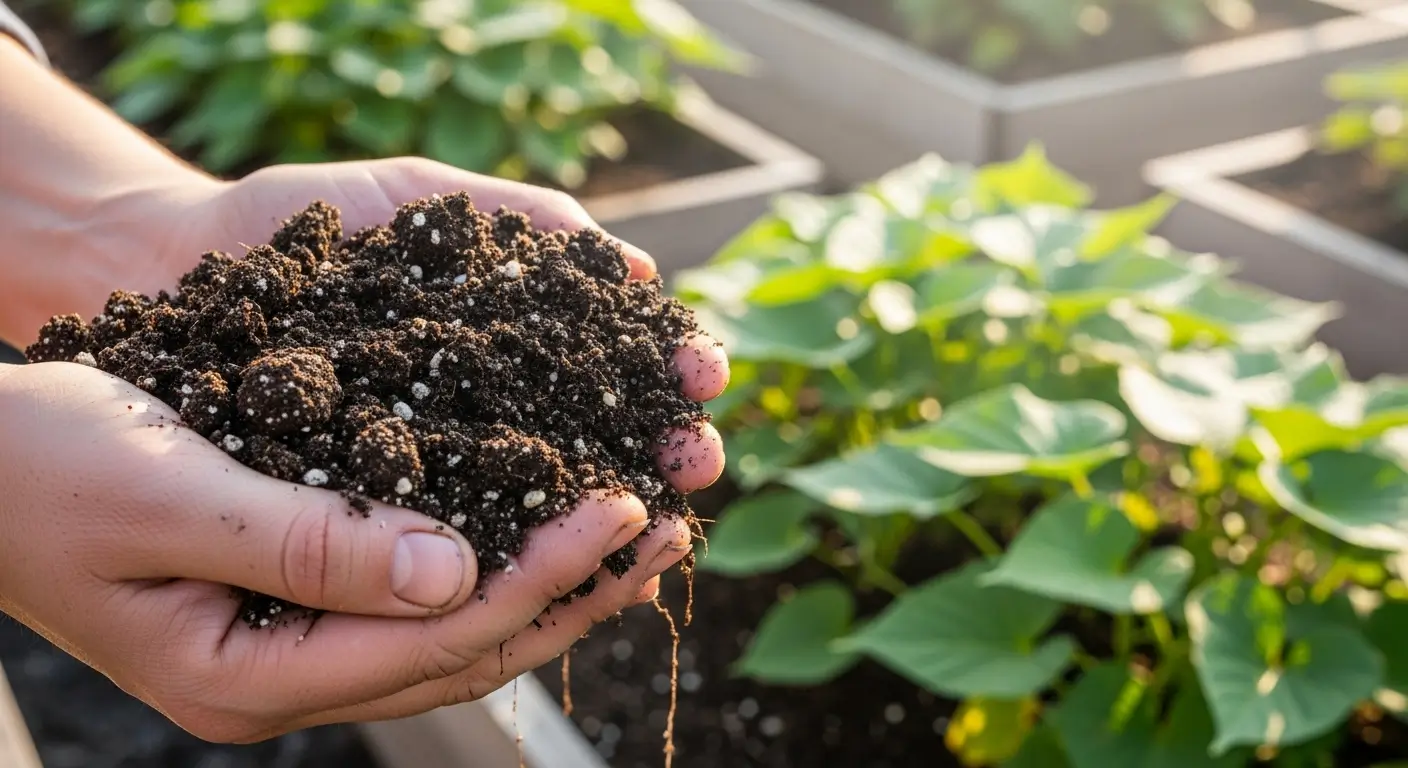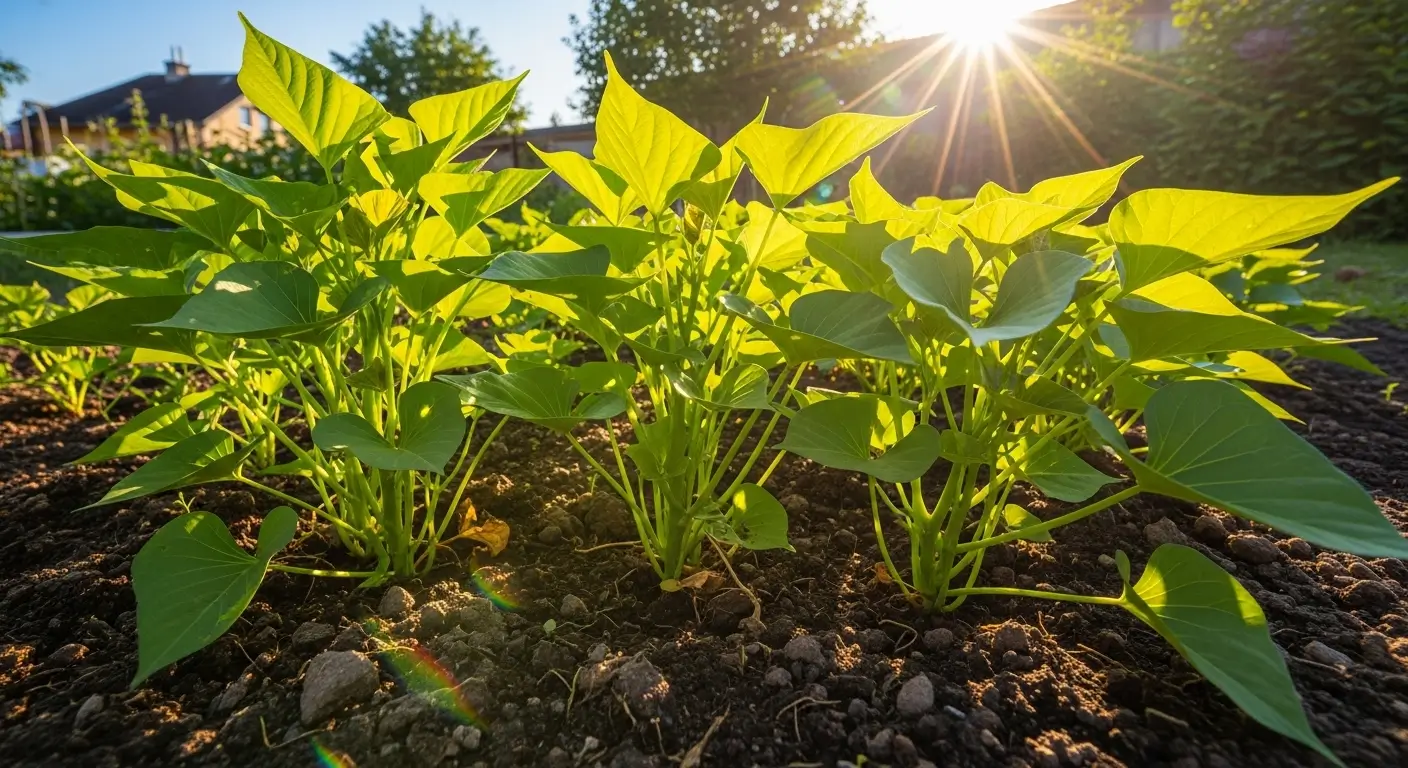Companion planting mistakes with garlic nearly destroyed my entire vegetable garden in 2019. You might be making some of the same errors I did. I used to think garlic was basically the Superman of the garden—could do no wrong, got along with everyone, and saved the day by scaring off all the nasty bugs. Boy, was I wrong!
Picture this: I’m feeling all confident and master-gardener-y, and I decide to plant garlic literally everywhere. I mean everywhere. I stuck garlic there between my beans, next to my peas, around my asparagus—you name it. I thought I was being so smart, creating this fortress of garlic protection.
Fast forward to spring, and half my garden looked like it was having a terrible day. My beans were puny, my peas looked sad, and my poor asparagus… well, let’s say it wasn’t reaching for the sky like it should’ve been. That’s when I learned the hard way that these companion planting mistakes with garlic can turn your thriving garden into a disappointing mess.
Table of Contents
Why Garlic Isn’t Always the Perfect Garden Neighbor
Here’s the deal—garlic’s got this thing called allelopathy. Don’t worry, it’s not as scary as it sounds! It just means garlic releases these natural chemicals that can affect other plants’ growth. Think of it like garlic having extreme opinions about who gets to live in the neighborhood.
These chemicals (like allicin and sulfur compounds) make garlic so excellent at keeping pests away. But they can also tell certain plants, “Hey, maybe you should grow somewhere else.” It’s like that friend who’s great at keeping creepy guys away at parties but also accidentally scares off the nice ones.
I had to learn this lesson the messy way when I basically turned my entire vegetable garden into a garlic fortress. Spoiler alert: not all my veggies were fans of the new security system.
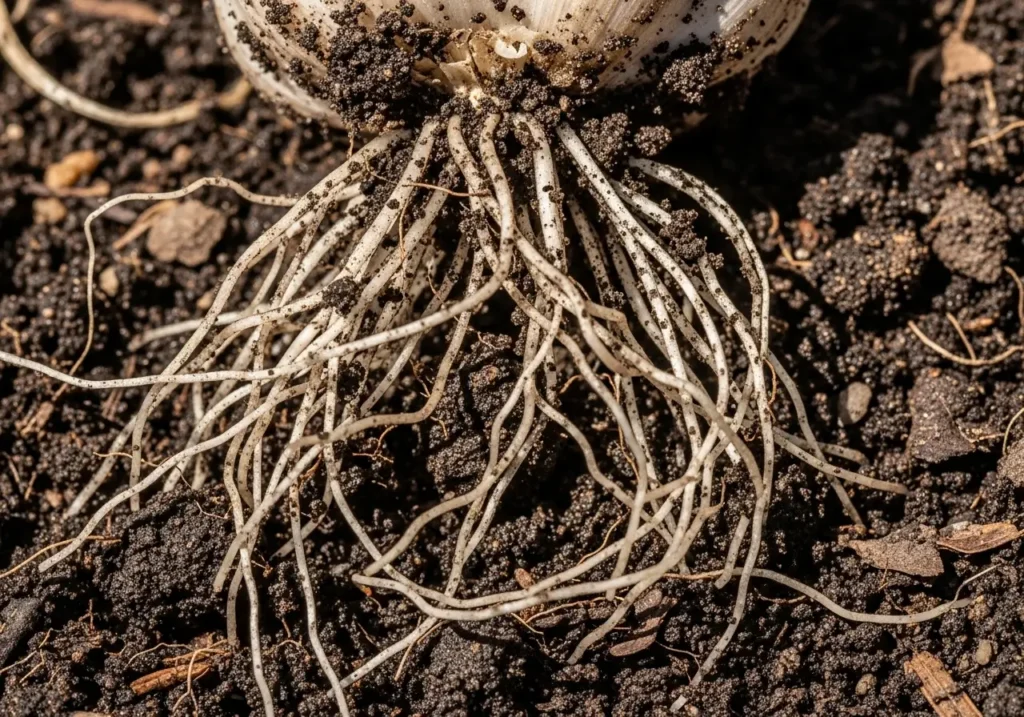
The 7 Most Common Companion Planting Mistakes with Garlic
1. Planting Garlic Too Close to Legumes
Oh man, this was my biggest “oops” moment. I planted garlic right next to my bean and pea rows because I thought, “Perfect! The garlic will keep the aphids away!” And it did help with bugs, but my poor legumes looked like they were having an identity crisis all season long.
Why it’s a problem: So here’s the thing—garlic’s chemicals can really mess with how beans and peas do their nitrogen-fixing magic. You know how legumes have those cool little nodules on their roots that grab nitrogen from the air? Yeah, garlic basically crashes that party and tells the nitrogen to go elsewhere.
Bad companions for garlic in this category:
- Any kind of beans (bush, pole, you name it)
- All the peas (garden peas, snap peas, snow peas)
- Soybeans
- Lentils
- Chickpeas
The fix: Give these guys some space! I now keep at least 3-4 feet between my garlic and any bean family plants. That middle ground is perfect for stuff like lettuce or spinach that doesn’t care either.
2. Overwhelming Brassicas with Garlic’s Sulfur Compounds
This mistake still makes me want to hide under my gardening hat. I surrounded my entire cabbage family with garlic like I was building some medieval castle defense. Instead of creating an aphid-proof zone, I basically made a sulfur bomb that left my poor brassicas looking stressed and tasting bitter.
Why it happens: Both garlic and brassicas are already pretty loaded with sulfur compounds. When you put them together, it’s like adding hot sauce to already spicy food—too much of a good thing becomes a bad thing. Your soil gets all out of whack, and your plants throw tantrums.
Plants to avoid with garlic:
- Cabbage and kale
- Broccoli and cauliflower
- Brussels sprouts
- Radishes (though honestly, some gardeners swear they work together—gardens are weird like that)
My current approach: I now keep my garlic on the opposite side of the garden from my brassicas. For pest control around my cabbage family, I use marigolds or nasturtiums instead. They’re much better team players.
3. Stunting Asparagus Growth
This one broke my gardening heart because asparagus is such a commitment. You plant it and then wait like three years for it to really get going. So when I planted garlic around my asparagus crowns and thought I was being protective, I was sabotaging a three-year investment.
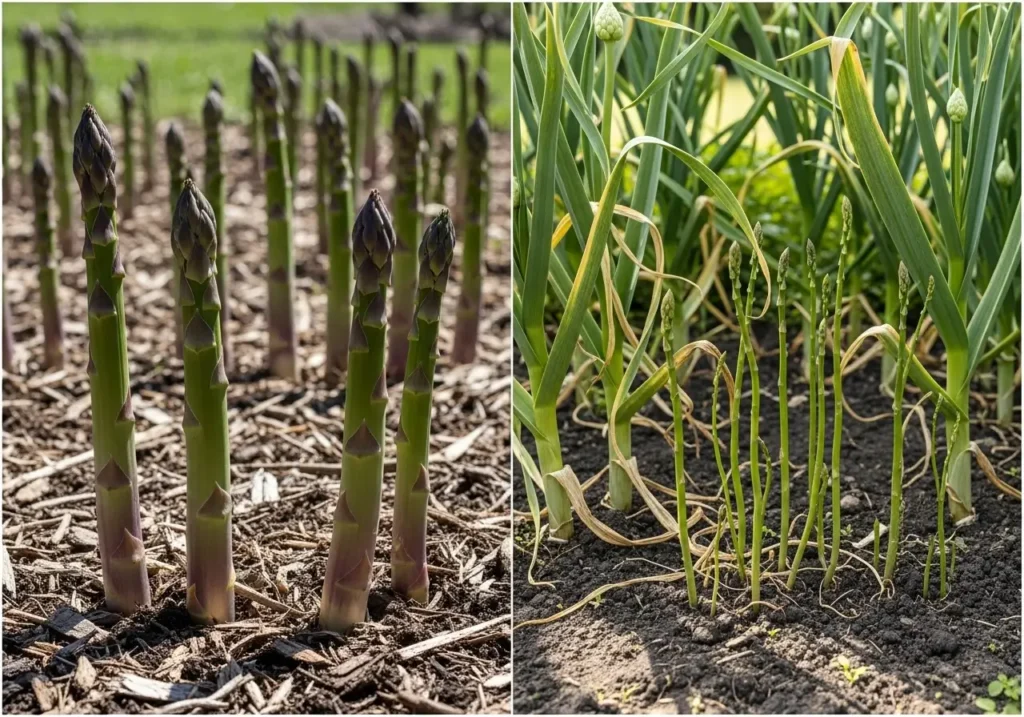
The science: Asparagus has these pervasive, shallow roots that spread everywhere, and they seem super sensitive to garlic’s “stay away” chemicals. It’s like the garlic keeps whispering mean things to the asparagus roots, and they can’t concentrate on doing their job.
What I do now: I keep my garlic at least 6 feet away from my asparagus bed. Instead of relying on garlic for protection, I pile on the mulch around my asparagus. Works way better, and my asparagus spears are finally thick and happy again.
4. Creating Competition with Other Alliums
Okay, this one’s gonna sound totally backwards, but hear me out. You’d think all the onion family plants would be like best friends forever, right? Nope! Planting garlic with onions, shallots, or chives is like forcing siblings to share a tiny bedroom—nobody’s happy.
Why this happens: They’re all fighting over the same food and space, and attract the same bugs. Instead of spreading out the pest pressure, you’re creating an all-you-can-eat buffet sign for onion maggots and thrips.
Better strategy: I spread my alliums around the garden like I’m distributing party guests who might not get along. Plant garlic in fall, harvest it in summer, then use that same spot for onions the following season. It’s like crop rotation but for family drama.
5. Inhibiting Sage and Other Mediterranean Herbs
I used to cram garlic right into my herb spiral next to my sage because I figured, “Hey, they’re both Mediterranean herbs, they must be BFFs!” It turns out that just because you like the same climate doesn’t mean you want to live next door to each other.
What went wrong: My sage stayed tiny and never got that incredible, robust flavor I was expecting. The garlic was constantly telling it to pipe down and stay small. Neither plant reached its full diva potential.
The solution: Now I give each Mediterranean herb its own space to shine. I use them strategically throughout the garden instead of trying to create some herb commune. Sometimes plants need their personal space, and that’s okay!
6. Overcrowding Small Spaces with Garlic
In my early days of container gardening, I could tuck garlic bulbs into every nook and cranny of my raised beds and pots. It was like playing garden Tetris, except nobody won.
The problem: Garlic bulbs need about 6 inches between them to grow correctly. When you try to squeeze them in with other plants, it’s like trying to fit four people in a two-person tent. Everyone’s uncomfortable, and nobody gets what they need.
Container considerations: In containers, garlic’s “go away” chemicals get super concentrated because there’s nowhere for them to spread out and dilute. It’s like being stuck in an elevator with someone wearing way too much cologne.
7. Ignoring Timing and Seasonal Conflicts
This mistake took me forever because I was so focused on space that I forgot about timing. I asked, “What should I plant with garlic?” When I asked, “When will these plants grow together?”
The timing issue: Garlic goes in the ground in fall and comes out in mid-summer, so it’s doing its most active growing and chemical-releasing from March through June. That’s precisely when all your spring veggies are trying to get established and don’t need a bossy neighbour telling them what to do.
Brilliant timing: Now I plan my spring garden knowing that garlic’s gonna be at its most opinionated from March to June in my zone 5b garden. I work around its schedule instead of pretending it doesn’t exist.
What Actually Works Well with Garlic
Don’t worry—garlic isn’t a complete garden hermit! After years of trial and error (okay, mostly error), here are the plants that actually seem to enjoy garlic’s company:
Excellent garlic companions:
- Tomatoes (garlic keeps those hornworms away like a bouncer)
- Peppers (they like the same conditions and don’t seem bothered by garlic’s attitude)
- Eggplant (actually benefits from having garlic as a bodyguard)
- Lettuce and spinach (they’re usually harvested before garlic gets too demanding about space)
- Strawberries (garlic scares off a bunch of berry-munching pests)
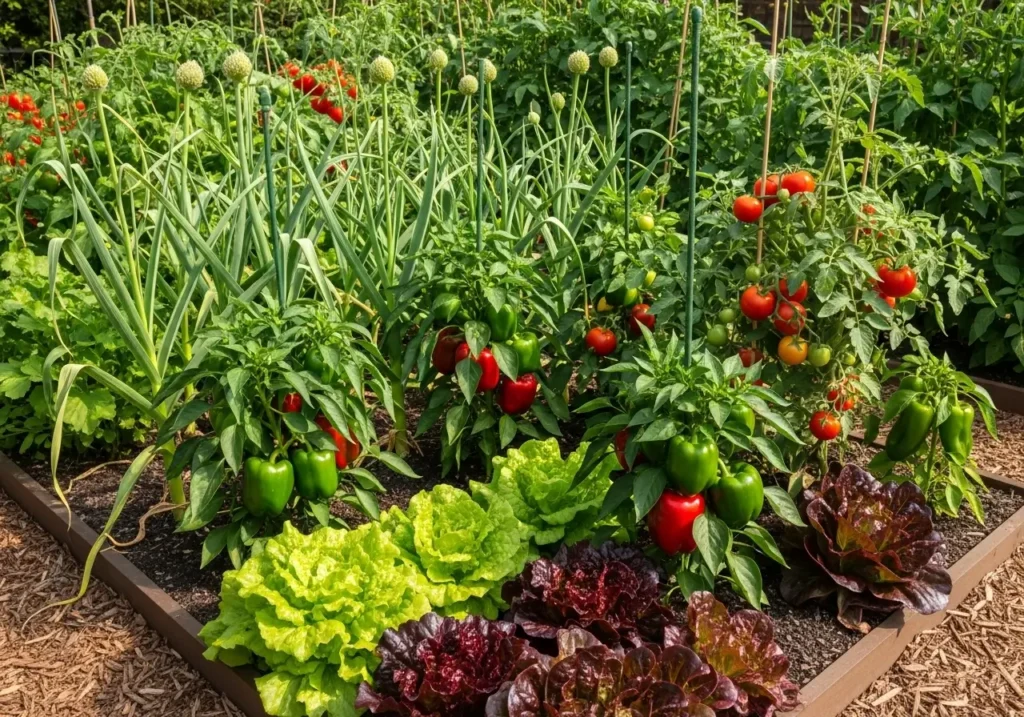
If you want the full scoop on garlic’s friendship potential, check out my guide on the best garlic companion plants. It’s got all the success stories!
Test Your Plant Combinations
Okay, here’s something fun I put together after years of trial and error! I got tired of people asking me “But what about THIS plant with garlic?” so I created this little tool that’ll give you instant answers. Just pick whatever you’re thinking of planting near your garlic, and I’ll tell you straight up whether it’s gonna work or if you’re heading for disaster.
Trust me, this would’ve saved me so many headaches back in my early gardening days. Go ahead, test out some combinations—I bet you’ll be surprised by some of the results!
🧄 Will This Plant Get Along with Your Garlic?
Pretty cool, right? I wish I’d had something like this when I was making all those rookie mistakes. Feel free to play around with different combinations—that’s exactly how you learn what works in your own garden space
How to Fix Companion Planting Mistakes
If you’re reading this and going, “Oh crap, I totally did that” (welcome to the club!), don’t panic. Here’s how to do damage control:
For this season:
- If you can safely move plants without traumatizing them, create more space
- Add some compost to help buffer garlic’s chemical attributes
- Baby, your struggling plants a little extra—they’re dealing with a difficult roommate
For next season:
- Draw it out on paper first (I’m obsessed with graph paper for garden planning)
- Think about succession planting to make the most of your space
- Consider timing as much as space—when will these plants actually be neighbors?
Creating a Garlic-Friendly Garden Layout
After making basically every mistake possible, here’s what actually works for me:
The 3-foot rule: Most sensitive plants get at least 3 feet of buffer zone from my garlic. It’s like a polite social distance for plants.
Strategic placement: I plant garlic on the north side of beds so it’s not throwing shade (literally) on everyone else when it gets tall in late spring.
Seasonal planning: I design my spring garden knowing exactly where the garlic will be doing its thing and plan around it like it’s a permanent fixture (because it basically is for half the year).
If you’re having other garlic drama beyond companion planting issues, my garlic growing problems troubleshooting guide covers everything from “why won’t my garlic sprout?” to “when the heck do I harvest this thing?”
Key Takeaways for Successful Garlic Companion Planting
Look, I’ve messed up every possible way when it comes to planting stuff with garlic. But every failure taught me something useful about how plants actually get along (or don’t) in the real world. Here’s what I really want you to remember:
- Garlic’s allelopathy is real—it’s not just garden folklore
- Space is everything—cramming plants together never works as well as you think it will
- Timing matters as much as space—think about when plants are actually growing together
- “Compatible” doesn’t always mean “should be roommates”—sometimes, good neighbors need fences
The biggest thing I’ve learned? Don’t be scared to experiment, but keep notes and pay attention to what’s happening. And don’t be too stubborn to change course when something’s obviously not working.
Your Turn to Grow Better
Companion planting with garlic doesn’t have to be rocket science. Still, it does help to understand that plants have personalities and preferences just like people do. Sharing all my spectacular failures enables you to skip some of the headaches I gave myself over the years.
Have you made any of these companion planting mistakes with garlic? Or you’ve discovered some weird plant combinations that totally shouldn’t work but somehow do. Drop a comment below—I love hearing about other people’s garden adventures (and misadventures). We’re all just making it up as we go along, and your stories might be precisely what someone else needs to hear.
For the complete lowdown on growing amazing garlic from start to finish, don’t miss my how-to grow garlic guide. It’s got everything from picking varieties to knowing when your bulbs are ready to harvest.
Happy gardening, and remember—every mistake is just expensive education for next season!
Companion Planting Mistakes with Garlic – Frequently Asked Questions
What plants should not be planted with garlic?
Bad companions for garlic include beans, peas, cabbage, broccoli, kale, asparagus, and other brassicas. These plants either suffer from garlic’s allelopathic compounds or create nutrient competition. Legumes like beans and peas are particularly affected because garlic interferes with their nitrogen-fixing ability, leading to stunted growth and poor yields.
Why do companion planting mistakes with garlic happen?
Companion planting mistakes with garlic occur because garlic releases allelopathic compounds (natural chemicals) that can inhibit other plants’ growth. Many gardeners don’t realize that garlic’s pest-repelling chemicals can also suppress nearby vegetables. Additionally, improper spacing and timing conflicts contribute to these common gardening mistakes.
How far should garlic be planted from other vegetables?
Keep garlic at least 3-4 feet away from sensitive plants like beans, peas, and brassicas. For asparagus, maintain at least 6 feet of distance. This spacing allows garlic’s allelopathic effects to dissipate naturally and prevents root competition. Proper spacing is the key to avoiding most companion planting mistakes with garlic.
